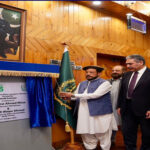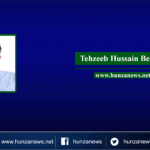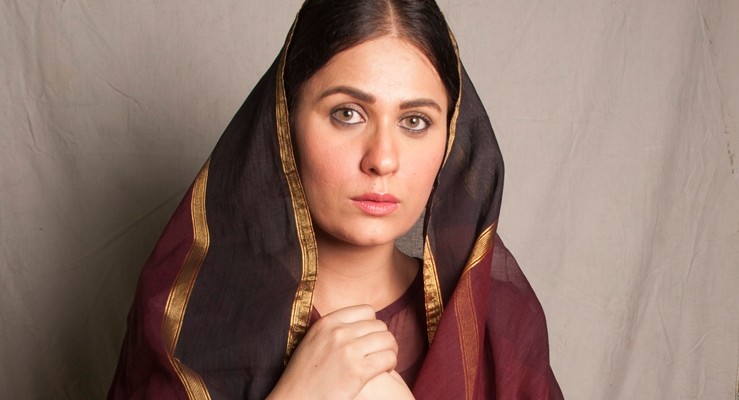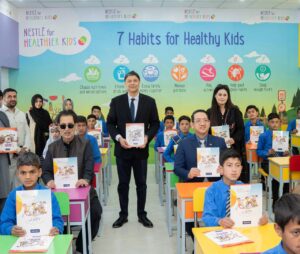When I hear names like Umera Ahmed, Faiza Iftikhar, Amna Mufti, Samira Fazal, Zanjabeel Asim, Noor-ul Huda Shah, Mehreen Jabbar, Marina Khan, Sania Saeed, Nadia Jamil, Nimra Buccha, Mahira Khan, Sanam Saeed, Sanam Baloch, Aamina Sheikh, or Hina Bayat, associated with a project, it means that I give that particular project at least a couple of serious dekhos.

From titles to publicity posters to a plethora of female characters to the reality that women have almost double the lines of their male counterparts, the Pakistani aurat is the raison d’être of 98% of our dramas. Add to this the undeniable fact that women are the biggest consumers of Pakistani drama, it would seem that Mahira is spot on with her observation:
“Male dominated drama ab aurtaun ka ho gaya hai. Pardey key peeche hon ya pardey pey ya phir pardey ke aagey…. hamari auraton ne maidan maar liya hai.”
We are ruling the roost. Wah! Who would’ve thunk it! Its all about women power! Yaaay!
 Momina Duraid
Momina DuraidAfter the cheering and chest thumping is done with, however, if we take a closer look there emerges a very different scenario. Though women are very much empowered behind the scenes, the images we see on our screens completely belie that reality. Ostensibly concerned with the aurat, the vast majority of our dramas have very little to do with addressing a woman’s concerns, highlighting her struggles, or offering real world, pragmatic and practical solutions. Rather than challenging the status quo, what we get instead is a reiteration of gender roles, reification of problematic stereotypes, and an ongoing affirmation of a woman’s non-status. Our heroine exists solely as as a daughter, a sister, a wife or a mother – this woman has no identity independent of the men in her life. And, if ever she does manage to step out of the shadow of patriarchy then of course there is the omnipotent duniya aur duniya waley.
I am not contesting the fact that we live in a very conservative male dominated society, nor am I glossing over the harsh reality that the average Pakistani woman is engaged in a constant struggle against injustice and inequality. My problem lies with the fact that even as our dramas proudly claim to mirror reality, they in fact do not do so. In sharp contrast to what we see – 24/7 gossiping, OTT made up women, extra-marital affairs, conniving saas-es and bechari bahus, shareef mashriqi ghareeb aurat vs theburi maghribi ameer aurat, siblings out to ruin each other, crying and never ending tears, love affairs galore – to give them credit our women as nowhere near as bubble-brained as depicted on TV.
Unlike the bovines of the TV world who wish to be ducks, we the real women barely, if ever, have the time to think about such nonsense. Don’t we have our hands full with academic tensions, job-related issues, workplace hassles, economic stresses, juggling family life with a professional life, familial concerns? Not that we see them depicted in our drama serials, but instead of sighing over morning stars and waiting for the proverbial knight in shining armor our women have gone ahead and forged their own paths.
Rather than looking to cows, sheep, goats, ducks and other animals of that ilk, why can’t our drama heroines draw inspiration from the very much human, not to mention homegrown real life role models like Samina Baig, Sana Mir, Sharmeen Obaid Chinoy,Mehreen Jabbar, Malala Yousufzai, Bilquis Edhi, Parveen Saeed, Mukhtaran Mai, to name just a few. Why can’t we have female characters who instigate change, act rather than merely reacting to changing circumstances? Where are the Dr. Zoyas and Shehnazs of today? Why has the Pakistan heroine lost agency.
The disenfranchised Pakistani heroine and who is responsible for her losing agency is a big question. Trying to get an answer is like opening up Pandora’s box. If you ask the writers they say there is no shortage of themes or innovative story lines on their part, but the blame lies with the producers who dictate themes. There are certain formulas that are deemed successful so the writers are being pushed to recycle tired old plot lines. According to them producers follow a very simple equation: more tears=higher ratings. Ratings, or TRPS, in turn are closely related to ad revenues, which is where the money, as in the real heart of the matter, lies.
Producers and channel heads, on the other hand, are quick to point out that they are merely responding to their audiences’ demands. Off beat shows like Ullu Baraaye Farokht Nahin, Rehaai, Talkhiyan, Sannata, Aunn Zara, Aseer Zadi, Coke Kahani, are not the ones that end up at the top of the charts, rather it is the same old ghisi piti stories –shohar biwi, shaadi talaaq, ishq muhabbat pyar, zaalim samaaj, mazloom maa with her requisite 3/4 daughters – that climb all the way to the top of the TRP charts. While channel heads present us with what seems to be irrefutable proof, what should not be overlooked is that this current system of calculating TRPs been variously criticized and is most definitely not the final word on what we as a people want to watch.
Call me a simpleton if you will, but it sure does seem like the underlying purpose of our media – to raise awareness, educate, provide hope, and entertain as well – has been lost somewhere along the line in this mad race for TRPs. Nowhere else is this sad fact more apparent than in the 90% of our dramas today. Gone is the adab adaab, shaistagi and tehzeeb and gone are the days of relatable heroines and believable story lines. Where are the stories of inspirational women? I grew up loving Dr. Zoya. Who is my daughter gonna want to emulate? Why are we compelling her to look westward – doesn’t she deserve a homegrown role model? Who are these cows and ducks and sheep and goats that are masquerading as representatives of Pakistani women? Where are the stories of women like you and me and those around us?
While I am unabashedly proud that our drama industry has grown by leaps and bounds, I do think time has come for our media to pause, self-evaluate, determine future direction and mark out long term goals. Our natural next step is looking beyond national boundaries and entering the global market. Thanks to YouTube our dramas are already functioning as our ambassadors to the world, offering a window into our rich culture and vibrant society. If we want this trend to grow and prosper then a paradigm shift has to take place. The tears equal ratings formula needs to be reworked. New stories and strong positive characters need to be written, and it goes without saying that the mazloom aurat needs to be buried away in some dark, dusty corner.
The day I see a Malala, a Mukhtaran Mai, a Sharmeen, a Sana, a Samina, a Mehreen, a Parveen, standing in as a Pakistani drama heroine is the day I will wholeheartedly cheer alongside Mahira: Yaay! [Pakistani] drama ab aurton ka ho gaya hai!
hipinpakistan.com

























